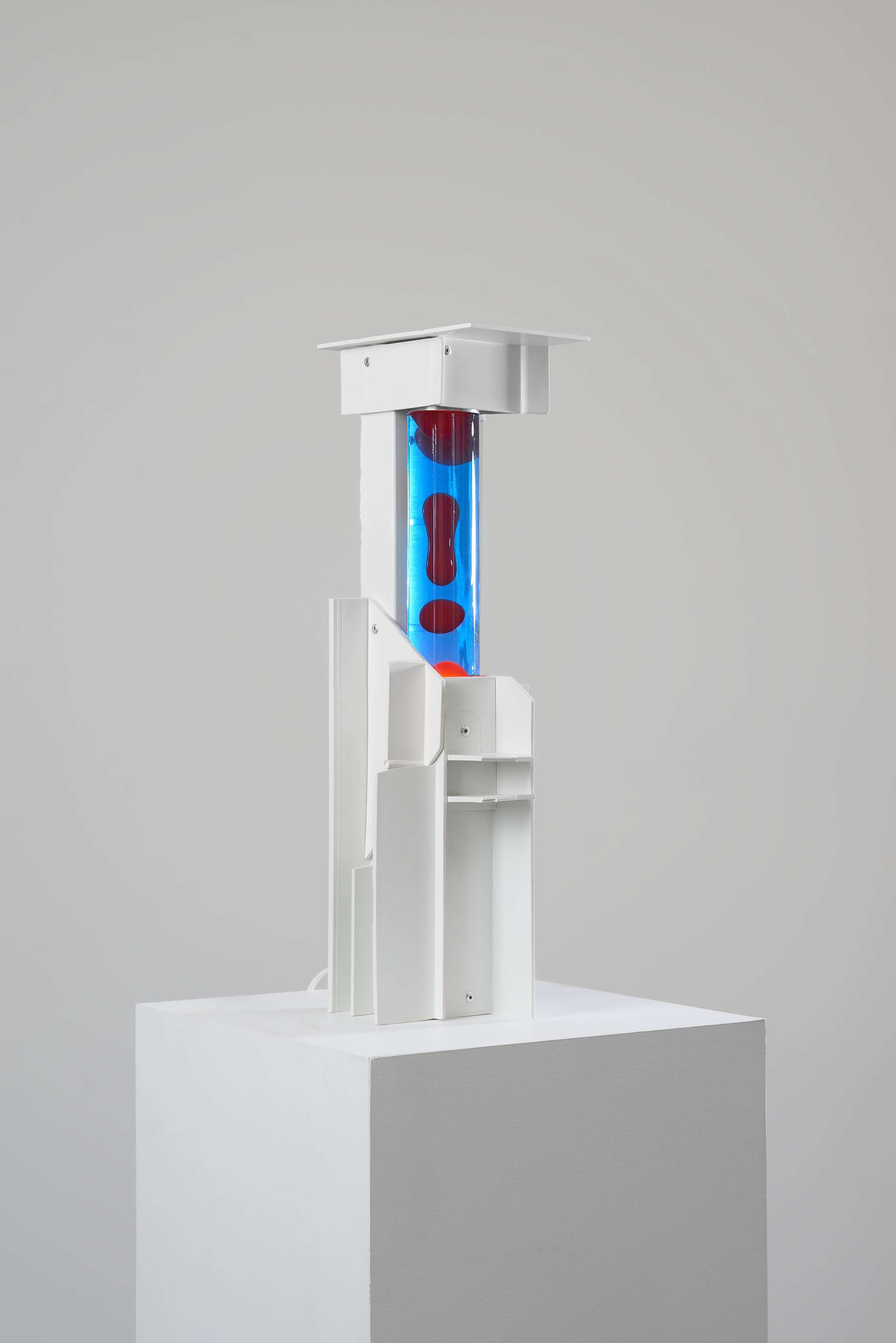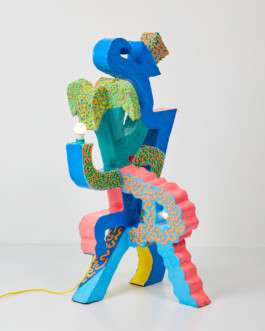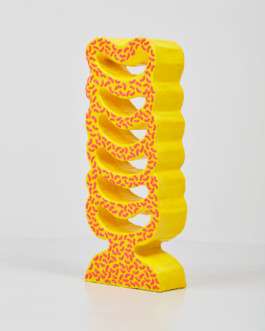



Pierre Castignola, Lava Lamp. (2023) © Pierre Castignola
COLLECTIBLE In-Depth
April 2023
This new series, COLLECTIBLE In-Depth, unveils the backstage of contemporary creation. Tackling various topics from personal designer processes to the position of collectible design on the global design market, COLLECTIBLE In-Depth offers different views to suit all tastes. Today we speak with Pierre Castignola, Diego Faivre and Hugo Beheregaray.
COLLECTIBLE: How would you describe the boundary between functional art and collectible design? Where do you situate your practice between those two?
Pierre Castignola, Hugo Beheregaray, Diego Faivre: Since contemporary art practices are looking for more various places to exist, rather than galleries or museums, sculptural or visual arts might tend more to appear with some sort of functionality in order to exist more easily in living and/or public spaces. I think that design, in the sense that it is not limited to a serial industrial production anymore, can focus more on its own self-criticism by producing unique self-reflective pieces.
A chair that would question the fact of being a chair next to a sculpture where you just add a light bulb on for example, is the kind of material environment that we try to provide and where we’re playing on the thin line that unites the two notions of functional art and collectible design.
C: How do you understand collectible design’s unique story from your concept to a piece someone lives with (and perhaps forms an emotional connection to)?
Pierre Castignola, Hugo Beheregaray, Diego Faivre: Making something that will not be reproduced in the exact same ways, reinforces the relation that we have with each object that we make. The energy and the effort that we put into making each object unique, is a celebration of variety, and proves that what we make is the fruit of the time and space we’ve been working in.
We think that someone that happens to live with our objects can sense the specific relation we have with a lamp, a chair or a carpet, through the choices of colors, cuts and shapes that we made during the fabrication process.
Our objects express the relation we have to making while giving enough space to those that are living with it in order to create their own relation with those collectible designs.
C: What is your favorite material?
PC, HB, DF: Playdough (Diego), Plastic chairs (Pierre) and Cardboard (Hugo).

Diego Faivre and Hugo Beheregaray, Tropical Lamp . (2022) © Ronald Smits

COLLECTIBLE In-Depth
April 2023

Pierre Castignola, Lava Lamp. (2023) © Pierre Castignola
This new series, COLLECTIBLE In-Depth, unveils the backstage of contemporary creation. Tackling various topics from personal designer processes to the position of collectible design on the global design market, COLLECTIBLE In-Depth offers different views to suit all tastes. Today we speak with Pierre Castignola, Diego Faivre and Hugo Beheregaray.
COLLECTIBLE: How would you describe the boundary between functional art and collectible design? Where do you situate your practice between those two?
Pierre Castignola, Hugo Beheregaray, Diego Faivre: Since contemporary art practices are looking for more various places to exist, rather than galleries or museums, sculptural or visual arts might tend more to appear with some sort of functionality in order to exist more easily in living and/or public spaces. I think that design, in the sense that it is not limited to a serial industrial production anymore, can focus more on its own self-criticism by producing unique self-reflective pieces.
A chair that would question the fact of being a chair next to a sculpture where you just add a light bulb on for example, is the kind of material environment that we try to provide and where we’re playing on the thin line that unites the two notions of functional art and collectible design.
C: How do you understand collectible design’s unique story from your concept to a piece someone lives with (and perhaps forms an emotional connection to)?
Pierre Castignola, Hugo Beheregaray, Diego Faivre: Making something that will not be reproduced in the exact same ways, reinforces the relation that we have with each object that we make. The energy and the effort that we put into making each object unique, is a celebration of variety, and proves that what we make is the fruit of the time and space we’ve been working in.
We think that someone that happens to live with our objects can sense the specific relation we have with a lamp, a chair or a carpet, through the choices of colors, cuts and shapes that we made during the fabrication process.
Our objects express the relation we have to making while giving enough space to those that are living with it in order to create their own relation with those collectible designs.
C: What is your favorite material?
PC, HB, DF: Playdough (Diego), Plastic chairs (Pierre) and Cardboard (Hugo).

Diego Faivre and Hugo Beheregaray, Tropical Lamp . (2022) © Ronald Smits

Contact
info@collectible.design
VIP PORTAL
EXHIBITOR PORTAL
PRIVACY POLICY
© 2025 Collectible
Contact
info@collectible.design
VIP PORTAL
EXHIBITOR PORTAL
PRIVACY POLICY
© 2025 Collectible